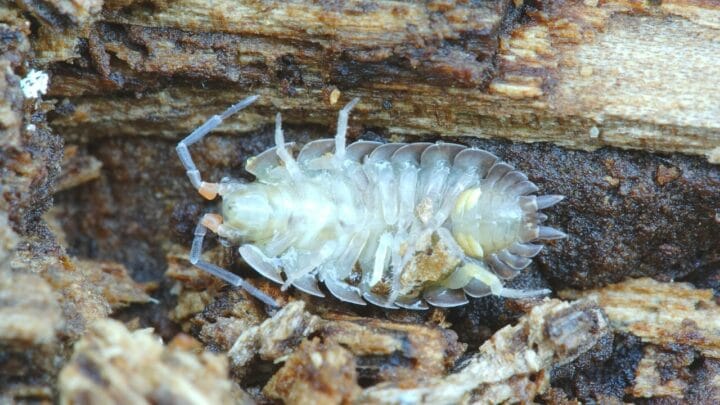It has long been believed that cockroaches will live even after the end of the world. This is something we’ve heard time and time again – like in Wall-E.
So it’s odd when we find a cockroach laying dead, flat on its back.
The big question is why do most insects die on their backs??
In this article, we will discover why our creepy crawly friends die in one of the most alluring positions on earth.
Why do insects die on their backs?
One of the most common reasons why insects die on their backs is because of a sudden weight shift between their legs and their body. As insects die and the feeling is fleeing from their legs, their weight shifts to their backs – hence having them turn over. This weight shift also has something to do with them no longer having blood circulation on their legs, which inadvertently contract. Since there is no longer something that can help balance them, they are forced to lie on their backs instead.
Why do their legs squirm as they die on their backs?
The squirming of their legs generally has something to do with the lack of blood, nerves, or feeling in their legs. As the weight shifts, their body does as well, and the legs become relaxed.
The insect can no longer keep the tension it requires to keep the legs straight and upright. Further, the nervous system begins to fail, and the insect is close to completely dying.
The jolting of the legs signifies its nearing death and the subsequent curling shows that it has finally died.
Which insects are known to die on their backs?
Many insects are known to die on their backs – the most notable being the cockroach. But, several other ones do as well, such as beetles and spiders, among others.
The main speculation as to why only a certain type of insect dies in such a way is because most of the support comes from the legs.
The importance of this body ratio is evident in the aforementioned insects, including flies and crickets.
Since most of their body is being supported by their legs, once the legs give out and the weight shifts, these insects are most likely going to be found on their backs.
Why don’t insects fall on their faces?
The insects that die on their backs are such curious ones. Of all the positions they take, the most common one is on their backs. This position has everything to do with science and the field of physics.
They can’t just lie flat on their faces because of the sudden weight shift. Their bodies and legs give a balanced amount of support.
But since their legs have suddenly gone and created this imbalance, it is almost impossible for these insects not to topple over.
How can insects feel when they are about to die?
Whenever we find an insect on its back, it’s either still squirming or being suspiciously still. Although, this begs the question of whether or not an insect can feel when its time is drawing near.
It’s almost a well-known fact that insects don’t feel pain when they die or are visibly hurt.
However, insects can indeed sense when they are about to die. This premonition-like sensation has something to do with their strong innate sense of smell and its correlation to pheromones. It’s akin to a person’s sixth sense – almost like a “Scent of Death.”
Is it the end of the insect when they fall to their backs?
It is commonly believed that insects are 100 percent dead once we see them on their backs. When we spray a cockroach five times, it lies on its back. But as we get the broom and look for it to sweep, it’s suddenly up and roaming about again.
There are instances where bugs become the epitome of resilience. Although they lie on their backs and squirm around, it takes willpower to get up again in the face of imminent danger.
Some insects don’t go down without a fight
Now that we know some bugs are resilient and don’t stay down after rolling to their back, we have to wonder how that happens.
If a bug still has some nerves on its legs, chances are, it can help turn itself right-side-up again.
But, if the bug’s nervous system has completely shut down, it leaves itself vulnerable with no chance of getting any nutrients to supplement it having to turn over.
This vulnerability would lead to either getting eaten by predators or be completely still and die a slow death.
Frequently asked questions
Do different ways of killing them affect the position they die in?
There is a relation between the way a bug dies and the position they take. An example is having a bug die from pesticides. If a bug dies this way, they usually have spasms and convulsions as they lie on their backs and their legs twitch in the air.
It’s a different story when a bug dies from a shoe, slipper, or even a mosquito racket.
These ways, as we may have observed from time to time, lead to a flattened bug rather than one spazzing out on the floor.
Will the bug assume the same position even when a leg is cut off?
Yes, an insect will assume the same position on its back even when its leg is cut off. But, this particular insect will have no hope of ever being right-side-up again.
Although the insect can be deemed healthy and alive, since it no longer can stand or get itself to shift its weight again, then there is no possibility that it will survive any longer – unfortunately.


